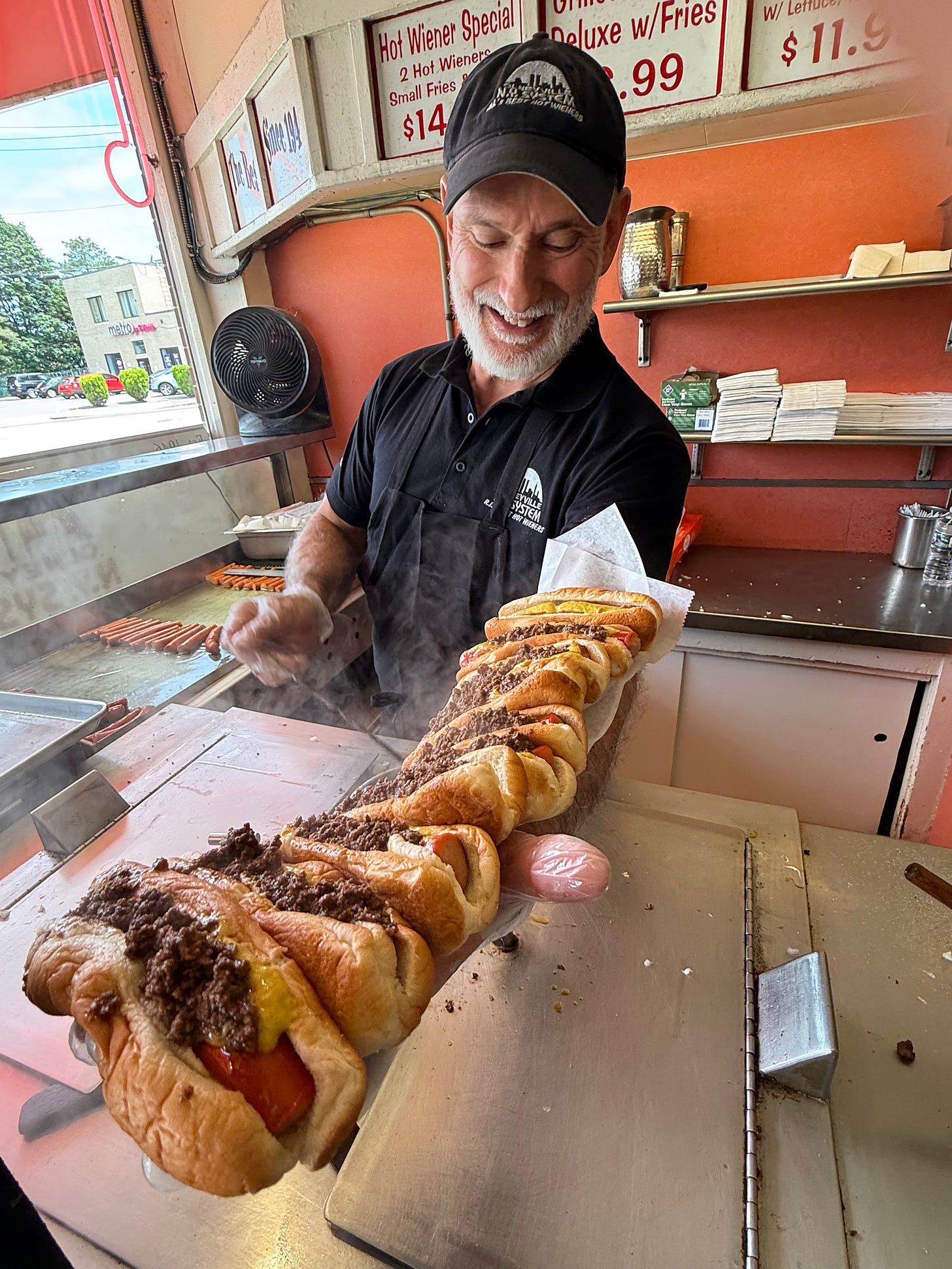Hot Wieners, Ratios, Shakespeare ... and knee surgery (ugh!)
An appreciation of RI's eccentric culinary scene, ratio redux, what they can't tell you about knee replacement surgery, plus books, watching recs, links!
The day after my Tonight Show appearance, I took a train to Rhode Island to rejoin Ann, who had been running her MFA program at Salve Regina University. She had to return to our Providence loft to attend to some business and she’d promised her faculty she’d bring back an Olneyville New York System lunch for all.
As everyone knows, they are “R.I.’s BEST H…
Keep reading with a 7-day free trial
Subscribe to Ruhlman's Newsletter to keep reading this post and get 7 days of free access to the full post archives.




